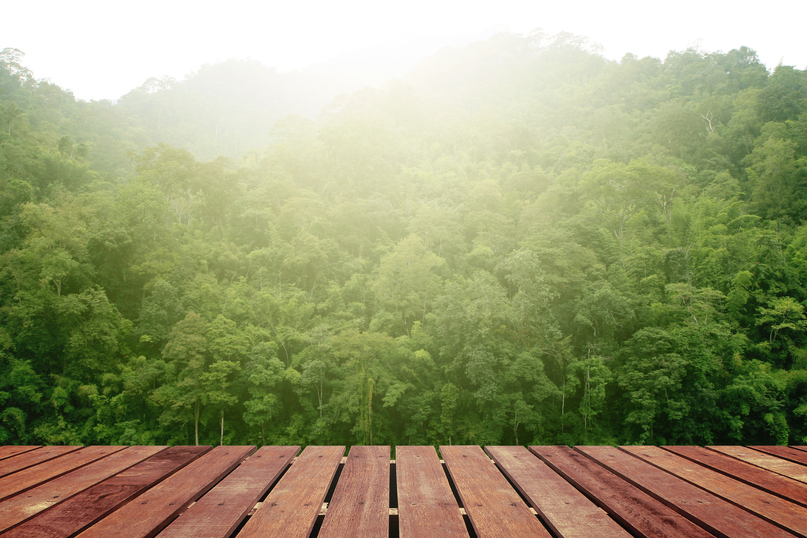Doubling of world resource consumption by 2050 shows need for sustainable tropical timber—new report
2 July 2021

Tropical forest above a floor made of tropical timber. © POND5/foto76
Yokohama, 2 July 2021: Global resource use could double by 2050, representing an opportunity for tropical timber producers, according to a study published by ITTO today. It forecasts that tropical industrial roundwood production will increase substantially by mid-century but says the sector needs a boost if it is to maximize its contribution to carbon-neutral production.
Tropical Timber 2050: an Analysis of the Future Supply of and Demand for Tropical Timber and its Contributions to a Sustainable Economy uses the Global Forest Product Model and publicly available data to provide projections to 2050 for tropical timber supply and demand and trends in tropical timber resources, products and industries.
The report, which was authored by Christian Held, Eva Meier-Landsberg and Verónica Alonso, finds that, without political action and the necessary industrial development, material use will increase in non-renewable segments—likely exceeding planetary boundaries and increasing pollution externalities.
On the other hand, using renewables to substitute for non-renewables is a ready-to-use solution.
“A doubling of global resource use by 2050 would likely outstrip global sustainable supply and trigger negative impacts on biodiversity, climate, ecosystems and human wellbeing,” said Dr Held. “The world urgently needs to prioritize resource-use efficiency and adopt carbon-neutral production based on renewable and sustainably produced materials such as wood.”
According to the report, tropical timber could take a leading role in substitution because the increasing demand for goods in the construction sector and other sectors like plastics and textiles can partially be met by wood-based products. But the tropical timber sector is relatively undeveloped, and the report sets out five complementary strategies that could help drive sustainable growth in the sector.
“We know that timber, including tropical timber, will have to be a major player in future materials consumption if the planet is to avoid an environmental catastrophe,” said Steven Johnson, ITTO Officer-in-charge. “The wealth of information contained in this report will help further engage governments and private-sector players in efforts to ensure that the tropical forest sector plays its vital role in combating climate change while also increasing the economic wealth of tropical communities and countries.”
Other key points arising from the study include:
- Based on a conservative mid-case scenario, total global production of roundwood will increase by 13% by 2050, to 4.3 billion m³. The total production volume of roundwood in tropical timber producer regions in 2050 is projected at 1.3 billion m³, of which woodfuel will account for 57%.
- Global woodfuel production will decrease from 1.8 billion m³ in 2015 to 1.5 billion m³ in 2050, a decline of 21%. The decrease will mainly be due to reduced consumption in sub-Saharan Africa.
- Global industrial roundwood production is projected to grow by 45% by 2050, to 2.8 billion m³, with tropical production increasing by 24%, to 533 million m³.
- All tropical timber producer regions will be net exporters of industrial roundwood by 2050.
- Tropical industrial roundwood will increasingly be supplied by plantations, with natural forests projected to account for 27% of the volume in 2050, down from 35% in 2015.
- To maintain market share, timber production in tropical forests needs to become more competitive by expanding the range of commercial species and including revenue streams from carbon and ecosystem services.
- Industrial concessions and communities will need to improve silviculture and obtain third-party certification of legality and sustainability.
- With limited expansion possibilities for large-scale plantations, smallholders and agroforestry systems will become important producers. Both need further improvements in productivity and timber quality.
- Private-equity capitalization and incentives for small-to-large plantation-based enterprises will be crucial for stimulating sector growth.
The report is part of an ongoing effort by ITTO to provide knowledge and learning experiences on incentivizing investments in natural tropical forests and the sustainable production of the wood and non-wood products arising from them.
The report is available free of charge at www.itto.int/technical_report



